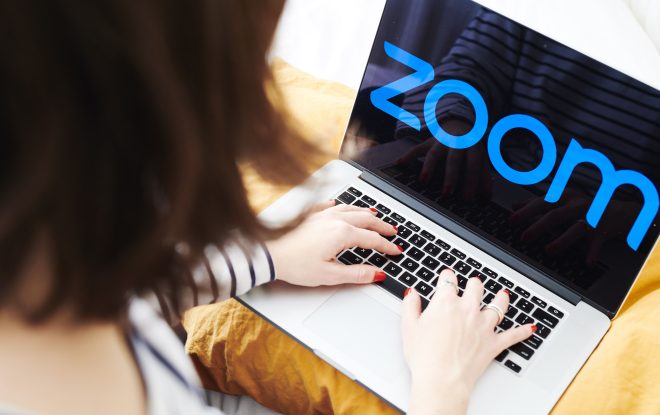2 Space Stocks That Could Be the Next Intuitive Machines
On Feb. 22, 2024, Intuitive Machines (NASDAQ: LUNR) landed its Odysseus uncrewed vehicle on the moon. In some ways, the landing was suboptimal — most notably, Odysseus toppled over after landing, limiting its ability to communicate with Earth.
On the other hand, though, even its less than 100% perfect landing accomplished something for Intuitive Machines that the U.S. hasn’t done in more than 50 years: put a lander on the moon. What’s more, this was the first successful moon landing ever by a private commercial company, arguably giving Intuitive Machines a pole position to win further contracts to put payloads on the moon. Indeed, Intuitive Machines is winning additional contracts, a $117 million contract earlier this month and a gigantic $4.8 billion contract just this past Tuesday!
Now, some other space companies want a piece of this moon action.
Firefly and Blue Ghost
The first company to attempt will be privately owned Firefly Aerospace. In November, the company will use a SpaceX Falcon 9 rocket to launch its Blue Ghost lunar lander, then attempt to land Blue Ghost and its 10 scientific experiment payloads on the moon.
Why isn’t Firefly flying Blue Ghost on its own rocket? Currently, Firefly’s Alpha launch vehicle isn’t big enough to hoist Blue Ghost all the way to the moon. However, a new rocket design dubbed the Medium Launch Vehicle, built in cooperation with Northrop Grumman, will be big enough to carry Blue Ghost once completed.
If it’s successful, the new rocket should give Firefly an economic advantage over Intuitive Machines because it won’t need to pay for rockets from another provider and can keep that money in-house.
ispace and Hakuto
Our next private company contender to duplicate Intuitive Machines’ success is Japan’s ispace (not to be confused with China’s iSpace — although I guarantee there will be confusion). In 2022, ispace attempted to land a Hakuto lander, but software glitches caused the lander to run out of fuel prematurely. Unable to brake effectively, it crash-landed hard on the moon.
Japan’s ispace intends to try again in December when a second Hakuto lander named “Resilience” will piggyback on a SpaceX Falcon 9 rocket en route to Earth’s biggest satellite. Resilience will attempt to put six payloads on the moon, including a small Tenacity rover.
A little more on Intuitive Machines
Making all of the above even more interesting, Intuitive Machines plans to launch its second lunar lander, IM-2, potentially as early as the fourth quarter of 2024. This sets up a race not only for who will be first to match Intuitive Machines’ achievement but also for ispace, Firefly, or both, to potentially fail at the same time as Intuitive Machines scores its second successful landing on the moon!
Be aware that all these launch dates are targets only. Launch schedules often shift in response to delays in development and in getting payloads ready for integration, bad weather delaying rocket takeoff, and so on.
In Reentry, his latest book about SpaceX’s development, space journalist Eric Berger says the timelines posited by space companies are often wishful thinking, describing what might happen if someone tried to drive the 30 miles between SpaceX headquarters in Hawthorne and Malibu, California, hitting nothing but “green lights” all the way. In other words, these launch dates could happen, but it’s probably safer to expect delays.
Still, in a world of nothing but green lights, space investors could theoretically see anywhere from zero to three moon landings over the next three months.
What it means for investors
What does this mean for investors? In an uber-optimistic scenario, let’s say all three landers reach the moon intact. That would be good news for Intuitive Machines (especially if its own lander lands upright this time).
But it would also be bad news, breaking the company’s monopoly on successful moon landings by a commercial company and introducing market competition that could depress prices and postpone profits for the only one of these three companies that is also a publicly traded stock.
For investors and space fans, however, this would introduce the possibility that newly successful lunar landers ispace and Firefly might capitalize on their success by conducting initial public offerings (IPO), creating even more space stocks for us to invest in. (Notably, Firefly has hinted that an IPO might be in its future.)
Of course, a less-happy scenario in which all three landers crash would be bad news for all companies involved. It would probably erase much of the 40% gain Intuitive Machines stock has made this year and postpone IPO prospects for the others. A mixture of successes and failures would yield mixed results.
One thing’s for certain: It’s going to be an interesting three months, and you know I’ll be watching closely.
Should you invest $1,000 in Intuitive Machines right now?
Before you buy stock in Intuitive Machines, consider this:
The Motley Fool Stock Advisor analyst team just identified what they believe are the 10 best stocks for investors to buy now… and Intuitive Machines wasn’t one of them. The 10 stocks that made the cut could produce monster returns in the coming years.
Consider when Nvidia made this list on April 15, 2005… if you invested $1,000 at the time of our recommendation, you’d have $740,704!*
Stock Advisor provides investors with an easy-to-follow blueprint for success, including guidance on building a portfolio, regular updates from analysts, and two new stock picks each month. The Stock Advisor service has more than quadrupled the return of S&P 500 since 2002*.
*Stock Advisor returns as of September 23, 2024
Rich Smith has no position in any of the stocks mentioned. The Motley Fool has no position in any of the stocks mentioned. The Motley Fool has a disclosure policy.
2 Space Stocks That Could Be the Next Intuitive Machines was originally published by The Motley Fool





Leave a Reply